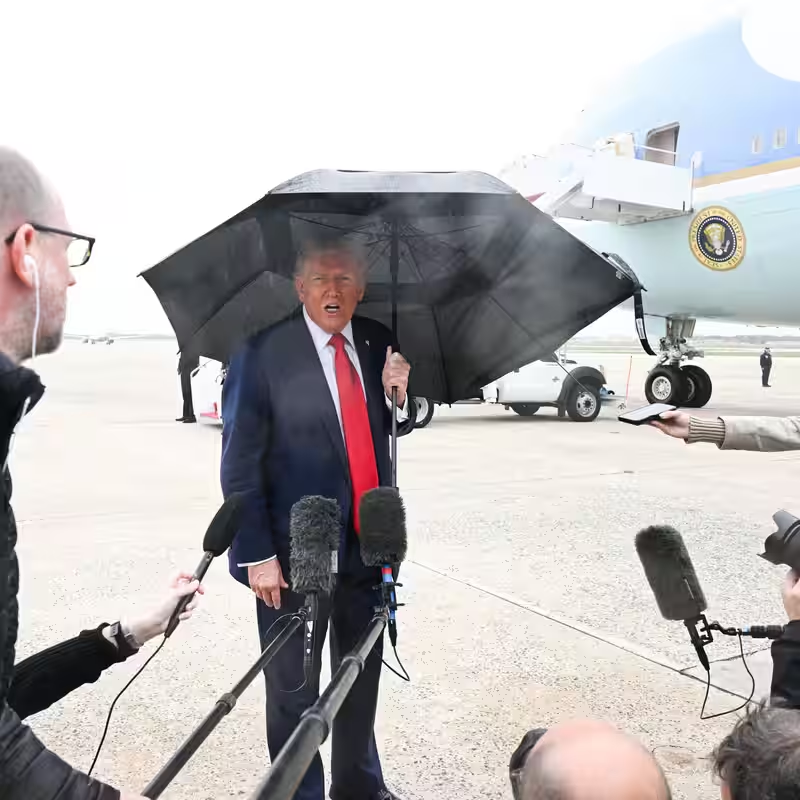Table of Contents
- Trump Announces ‘Massive’ 100% Tariff on Chinese Imports
- Asian Markets Plunge Overnight
- Global Ripple Effects and Investor Panic
- Déjà Vu? Comparing 2018 and 2025 Trade Wars
- What’s Next for U.S.-China Trade Relations?
- Sources
Trump Announces ‘Massive’ 100% Tariff on Chinese Imports
On Friday, October 10, 2025, former President Donald Trump—now back in the White House—shocked global markets with a bold declaration: a proposed 100% tariff on all Chinese imports, coupled with new export controls on “critical software” technologies .
Speaking at a campaign-style rally turned policy address, Trump said the move was necessary to counter China’s recent restrictions on rare-earth mineral exports, which are vital for everything from electric vehicles to defense systems. “They’re choking us on the inside,” Trump warned. “We’re not going to take it anymore.”
The announcement, though short on legislative detail, was enough to ignite immediate fear among investors worldwide—particularly in Asia, where markets opened sharply lower on Monday, October 13.
Asian Markets Plunge Overnight
Japan’s Nikkei 225 dropped over 3.2%, while South Korea’s KOSPI shed 2.8%. Hong Kong’s Hang Seng tumbled nearly 4%, and China’s Shanghai Composite fell by 2.5% in early trading .
Export-heavy economies bore the brunt of the sell-off. Semiconductor stocks—deeply intertwined with Chinese manufacturing—led the decline. Taiwan Semiconductor Manufacturing Company (TSMC) shares fell more than 5%, reflecting fears of disrupted supply chains and retaliatory measures from Beijing.
Why the Panic?
Investors aren’t just reacting to the tariff itself, but to the uncertainty it creates. “Markets hate unpredictability,” said economist Mei Lin of Singapore-based Horizon Capital. “A 100% tariff isn’t just protectionism—it’s economic warfare.”
Global Ripple Effects and Investor Panic
The tremors weren’t limited to Asia. U.S. stock futures slid overnight, with the Dow Jones Industrial Average undercutting its 50-day moving average—a technical red flag for traders . Gold prices surged as investors sought safe-haven assets, while the U.S. dollar weakened, with analysts noting it “is not looking healthy” amid fears of inflation and trade disruption .
European markets also braced for impact. Germany’s DAX and France’s CAC 40 opened lower on Monday, reflecting concerns over secondary effects on global manufacturing and consumer prices.
Déjà Vu? Comparing 2018 and 2025 Trade Wars
This isn’t the first time Trump has wielded tariffs as a weapon. During his first term, he imposed sweeping duties on $370 billion worth of Chinese goods, triggering a multi-year trade war that raised costs for U.S. businesses and consumers alike.
But the 2025 proposal is far more aggressive. A 100% tariff would effectively double the price of Chinese imports—from electronics and apparel to machinery and auto parts. Economists warn this could reignite inflation just as the Federal Reserve has begun cutting interest rates.
“In 2018, tariffs were targeted,” said Dr. Alan Reeves, trade policy fellow at the Brookings Institution. “This feels like a sledgehammer. The collateral damage could be enormous.”
What’s Next for U.S.-China Trade Relations?
While the White House has not yet released formal legislation, the mere threat has already altered market psychology. Analysts expect China to respond with its own retaliatory measures—possibly targeting U.S. agriculture, energy exports, or tech firms operating in China.
Meanwhile, U.S. companies with heavy exposure to Chinese supply chains are scrambling. Apple, Tesla, and Walmart have all issued internal risk assessments, according to supply chain consultants.
For now, the world watches and waits. As one Tokyo trader put it: “Trump doesn’t bluff. And that’s what scares everyone.”




